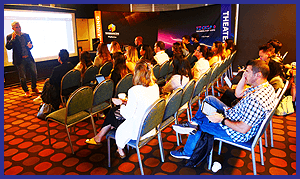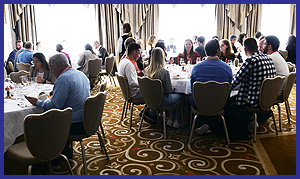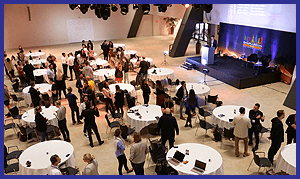













TECHSPO Cape Town is a two-day technology expo returning October 16 – 17, 2024 to the V&A Waterfront Cape Town Avenue Conference Venue in Cape Town, South Africa. TECHSPO Cape Town brings together developers, brands, marketers, technology providers, designers, innovators and evangelists looking to set the pace in our advanced world of technology.
Showcasing the next generation of technology & innovation; Internet, Mobile, AdTech, MarTech & SaaS Technology, Exhibitors have the opportunity to show off their companies to consumers, the highest caliber investors, hordes of press, the most sought after talent, and the greatest pool of tech enthusiasts looking to celebrate emerging products. Be prepared to be inspired, amazed and educated on how these evolving technologies will impact your business for greater growth.
As part of TECHSPO Cape Town is a limited attendance paid event, DigiMarCon Africa Digital Marketing, Media and Advertising Conference. If the conference is where the learning, theory and inspiration happens, then the TECHSPO floor is where the testing, networking and product interaction takes place.
Attendance is limited, Register today!

TECHSPO Cape Town 2024 will play host to some of the finest innovators, entrepreneurs, founders and business owners. Educators, students, investors, senior marketers and branders, digital executives and professionals, web & mobile application developers, strategists, designers and web project managers, business leaders, business developers, thought leaders and other professionals like you who operate in the broad technology industry from around the world will gather to attend TECHSPO Cape Town Technology Expo.

The TECHSPO Hall showcases the next generation of technology & innovation; Internet, Mobile, AdTech, MarTech and SaaS. The TECHSPO Hall includes ample break tables for networking with your peers.
For more information about exhibiting or becoming a sponsor at TECHSPO please fill our inquiry form here.
Access: Included with all TECHSPO Passes

The Training Theater has a mix of a selection of live streamed sessions from DigiMarCon Digital Marketing, Media and Advertising Conference throughout the event program and a Lunch and Learn presentation during the Networking Luncheon.
Access:Limited Open Seating available with all TECHSPO Passes

The Dining Hall is where food and beverage catering is provided. Use these scheduled networking breaks to get to know the people you connect with via social networks—up close and personal.
Access: Welcome Refreshments and Luncheon included with Training and All Access Passes only

The DigiMarCon Auditorium is a live stage with round-table seating of speaker presentations from DigiMarCon, which is a co-located Digital Marketing, Media and Advertising Conference held at the same venue. Presentations feature Keynotes. Industry Panels and Master Classes given by Expert Speakers in the digital marketing industry, providing attendees with digital marketing best practices, latest trends, practical solutions and strategy.
Access: Auditorium Access (10am to 3pm) included with Training and All Access Passes only
Bring your brand, product or solution to the forefront of the leading Technology Expo Event. Take advantage of the various available exhibiting packages that can provide a significant increase in brand awareness and recognition exponentially. Speak to us about your ideas and we will help build a customized package for unique branding opportunities in line with your business objectives.
Sign up for email updates and get your the FREE TECHSPO Cape Town brochure and stay in the know about all things TECHSPO including price changes and discounts